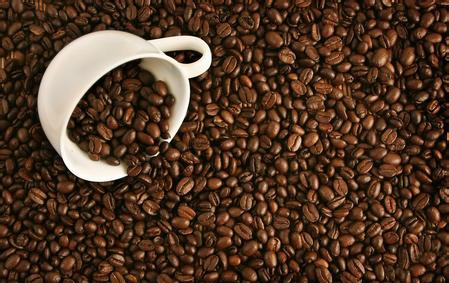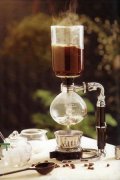Interpretation of high-quality coffee called specialty coffee, refined coffee

Boutique coffee (Specialty Coffee), which is also called specialty coffee and refined coffee by some people, was first proposed by Ms. Erna Knustsen in 1974 in the monthly Journal of Tea and Coffee (Tea& Coffee Trade Journal). It developed gradually in the middle and late 1980s. American Fine Coffee Association (SCAA,Specialty Coffee Association ofAmerica), Japanese Fine Coffee Association (SCAJ,SpecialtyCoffee Association of Japan) and European Fine Coffee Association (SCAE,Specialty Coffee Association ofEurope), which were established in 1982, 1987 and 1998 respectively, have played a key role in the development of boutique coffee. Although the development of boutique coffee movement is not long, it has become the most popular concept in the coffee world.
We might as well analyze it from four angles. First of all, the concept of boutique coffee was originally proposed to distinguish it from the bulk commercial coffee in the New York coffee futures market (ordinary coffee in circulation in the general market, all known as commercial coffee). This is a new understanding of coffee, a "competition" between the coffee consumer camp and the coffee producer camp, and a symbol of the real rise of consumer power in the coffee world. it is a comprehensive challenge to the simple, rough and unskilled grading rules customized by coffee-producing countries. Proponents of boutique coffee solemnly declare that the ultimate flavor and taste of coffee drinks are the concerns of those who pay for coffee. Of course, it is precisely because we have such a "high-end" boutique coffee, the improvement of its conceptual system has a gradual process, coffee people all over the world are in practice and exploration, no one can dominate the right to speak, and now the fun has just begun.
Secondly, the concept of fine coffee is the product of fully learning and drawing lessons from the tasting theory of wine and other drinks, emphasizing the close relationship between the upstream elements such as variety, soil and water, climate, planting and the quality of coffee in the cup, which is verified by cup test. While working in the coffee industry, I am also a wine enthusiast, so I am deeply impressed by this-wine lovers like to talk about the soil characteristics of so-and-so, the characteristics of so-and-so wine grape varieties, and the microclimate of so-and-so. And the grapevine age of so-and-so manor and so on. The emergence of the concept of boutique coffee also makes coffee lovers' mouths full of such words related to climate, soil, variety and so on, which leads to an important word that must be learned: Terroir. Terroir, which comes from French and can be translated as "humanistic soil" in Chinese, is the product of the interaction between the micro-soil climate environment and human beings where the coffee tree is located. When we study the product descriptions of those boutique coffee, we will find that they are full of detailed descriptions of plantations, because only these boutique coffee beans can express the individual flavor of the producing area incisively and vividly. No wonder even Starbucks is talking about the beauty of coffee from the place of origin.
In addition, although the concept of boutique coffee is based on "varieties, climate, soil and water, planting and other upstream factors to obtain good coffee beans" as the core, it is not limited to this. It clearly points out that the acquisition of a good cup of coffee is a "systematic engineering" that pays attention to the complete process, and every link such as initial processing, hand selection, baking, grinding and extraction is of great importance-the upstream and downstream of the coffee industry chain is thoroughly integrated here. Roasting and extraction are as important as varieties. "good beans, easy roasting and good extraction" are considered to be the three elements of fine coffee-our Pulan Coffee College often jokes that fine coffee is all "three good students". It is necessary to learn a related English word Traceability, which emphasizes the traceability and descriptivity of the whole production process of coffee from seed selection. We might as well call it "coffee with clear origin and clear planting and processing".
Finally, the concept of boutique coffee is also a product carefully designed by commercial organizations for the sake of interests, such as a series of expensive training and certification around boutique coffee. for example, associations related to boutique coffee, commercial organizations, coffee competitions, cup test competition, coffee bean auctions and so on. But as long as we look at it reasonably, fine coffee is of great significance not only to improve our coffee quality, but also to improve our taste level, but also a great incentive for growers in coffee producing areas. it is also of positive significance to practice the principle of fair competition, to ensure fair purchase prices and to improve the living conditions of growers.
Important Notice :
前街咖啡 FrontStreet Coffee has moved to new addredd:
FrontStreet Coffee Address: 315,Donghua East Road,GuangZhou
Tel:020 38364473
- Prev

The history of the siphon pot the history and culture of the coffee pot
In 1840, a glass test tube in a laboratory triggered the invention of the siphon coffee maker (Syphon). The British took the test tube used in Biya's chemical experiment as a model to create the first vacuum coffee pot. Two years later, Mrs. Bachang of France improved the kettle, and the familiar upper and lower convection siphon pot was born. The siphon coffee maker lived in France for a long time.
- Next

Third Wave Coffee
Third Wave Coffee is a focus on quality in the cup that associated with specific origins, production methods, and preparation styles as opposed to consumption alone which goes back to The First wave Coffee. The Second Wave Coffee was about
Related
- Detailed explanation of Jadeite planting Land in Panamanian Jadeite Manor introduction to the grading system of Jadeite competitive bidding, Red bid, Green bid and Rose Summer
- Story of Coffee planting in Brenka region of Costa Rica Stonehenge Manor anaerobic heavy honey treatment of flavor mouth
- What's on the barrel of Blue Mountain Coffee beans?
- Can American coffee also pull flowers? How to use hot American style to pull out a good-looking pattern?
- Can you make a cold extract with coffee beans? What is the right proportion for cold-extracted coffee formula?
- Indonesian PWN Gold Mandrine Coffee Origin Features Flavor How to Chong? Mandolin coffee is American.
- A brief introduction to the flavor characteristics of Brazilian yellow bourbon coffee beans
- What is the effect of different water quality on the flavor of cold-extracted coffee? What kind of water is best for brewing coffee?
- Why do you think of Rose Summer whenever you mention Panamanian coffee?
- Introduction to the characteristics of authentic blue mountain coffee bean producing areas? What is the CIB Coffee Authority in Jamaica?

